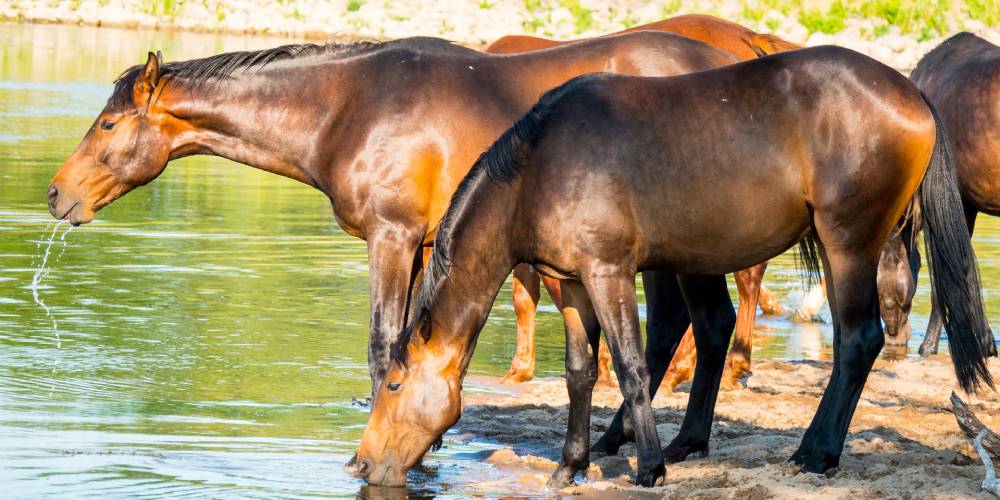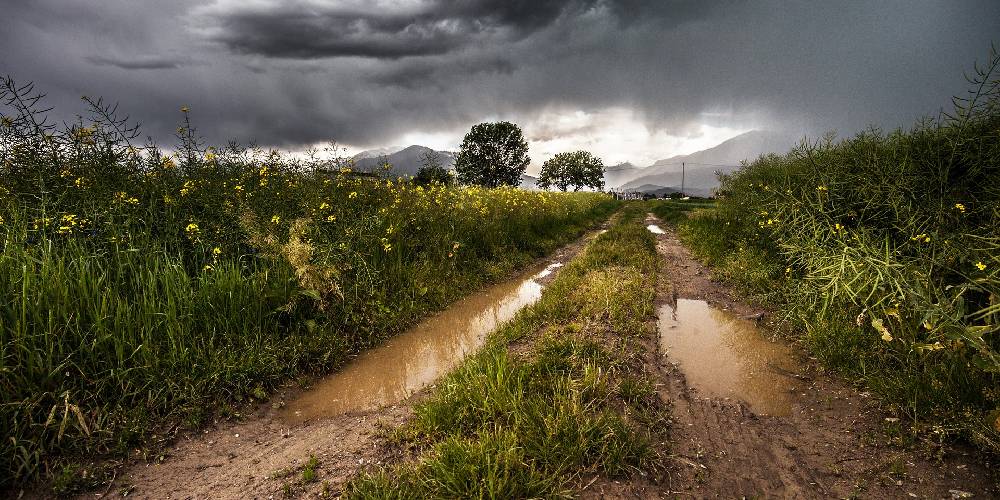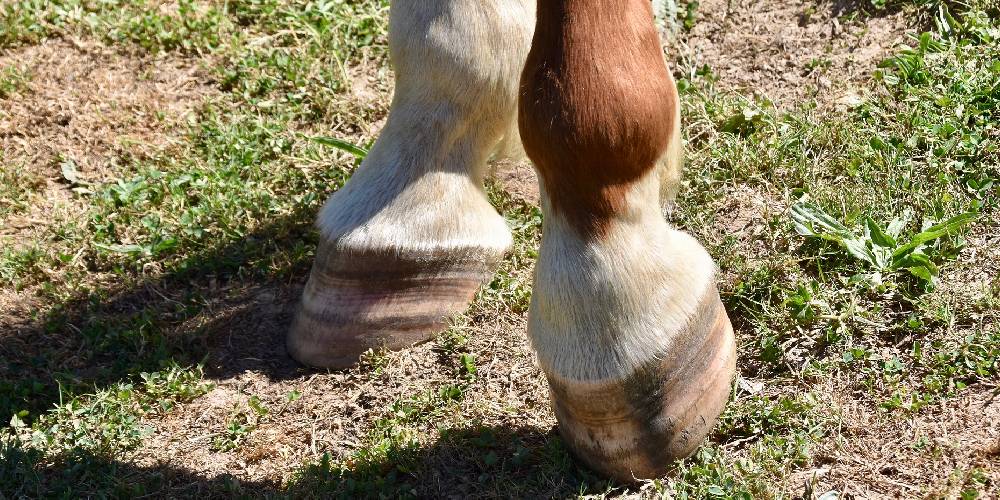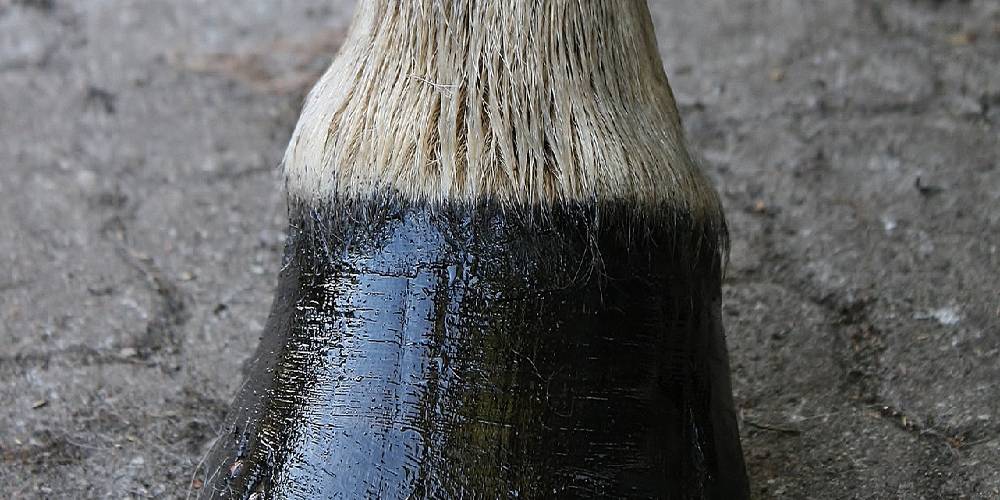Thrush is a fairly common bacterial infection of the horse’s hoof known for its disgusting smell and common appearance in horses living in wet climates. Thrush is known to be a fairly progressive infection if not treated when discovered and can cause a number of hoof and soundness issues.
What Is Thrush?
Thrush is a bacterial infection seen in horses known for its foul smell. The bacteria that causes thrush in horses is known as Fusobacterium necrophorum. This bacteria is found in the horse’s natural environment, especially in wet conditions, and grows best in low oxygen environments. This is why thrush occurs best in horses with deep clefts in their hooves or horses with contracted heels as it is in these crevices that thrush can grow easily. Thrush is caused by a number of things, but the main thing being wetness in the hoof that is not consistently cleaned out.
What Causes Thrush In Horses?

Though it is the bacteria in the horse’s environment that technically causes thrush, there are a few things that can cause your horse to be more prone to thrush. A few of these things include:
Lack Of Exercise
Believe it or not, a lack of exercise is actually one of the most common causes of thrush in horses. The reason for this is that frequent exercise actually helps to clean out the hoof and promote better blood circulation. If the horse isn’t exercised often, the condition of the hoof can actually begin to deteriorate and the feet aren’t naturally cleared out. This can cause a wetness buildup and the beginnings of thrush to appear.
A Muddy Or Dirty Environment
Thrush can be seen in environments where horses are kept in a dirty stall or in a muddy pasture. This is because it is in these moist areas where the bacteria that causes thrush (Fusobacterium necrophorum) is most frequently found. Horses housed in these conditions often will have very wet hooves which is the perfect place for this to start.
Poor Hoof Care
Thrush is found mainly in horses who have poorly taken care of feet. Horses who don’t have their feet cleaned out consistently are the most prone to thrush as the dirt, mud, and wetness will just sit in their hooves over an extended period of time creating the perfect place for thrush to develop and spread.
Deep Clefts
Horses who have naturally deep clefts are, unfortunately, more prone to thrush than horses with average sized clefts. This is because the deep clefts will trap more wetness and muck than normal clefts will.
Contracted Heels
Contracted heels is an issue seen in many horses of all different breeds. In a horse with contracted heels, the crack in between the bulbs of the horse’s heel is deep and difficult to reach. Because of this, this is a great place for Fusobacterium necrophorum to turn into thrush.
What Part Of The Hoof Is It Most Commonly Found In?
There are two places that thrush is most commonly seen in the hoof. These are the:
- Lateral Sulcus
- Central Sulcus
These are basically the indents on either side of the frog of the hoof and the ‘crack’ or space between the bulbs of the horse’s heel. The reason these are the most common places for thrush is the fact that they are the deepest part of the hoof that can easily hold more moisture than other parts of the hoof like the frog or the sole.
In What Climate Is Thrush Most Common?

Horses who live in a more humid, damp, or rainy climate are the most prone to thrush. this is because thrush needs a wet hoof to occur and most of the horses in this environment have wet or moist hooves which is the perfect breeding ground for the thrush-causing bacteria Fusobacterium necrophorum.
Is Thrush A Common Thing For Horses To Have?
Yes, thrush is actually quite a common thing for horses to have and most horses will experience it at least once in their lifetime. Personally, I have had one of my Arabians have a mild case of thrush once before.
Can Wild Horses Get Thrush?
Yes! Any horse can get thrush including wild horses, especially those living in a moist environment. Because wild horses are constantly moving around, however, thrush is less common in these horses than those who are domesticated and sitting in a wet area.
Can Thrush Make A Horse Lame?
Yes, actually thrush can in fact make a horse lame if it progresses enough to get to that point. The most common cause of lameness related to thrush is when thrush gets into the white line of the horse’s hoof. Thrush getting into the white line of the hoof can cause white line disease and the detachment of the hoof wall from the hoof itself.
What Does Thrush Smell Like?
Thrush smells, well, absolutely disgusting. The smell of thrush is similar to the smell of rot and decay. The bacteria in the hoof begins to eat away at the frog and hoof and releases a thick black discharge that reeks.
Thrush smells horrible, and let me just tell you that if you don’t know what thrush smells like, consider yourself lucky.
What Hooves Is This Most Commonly Seen In?

Believe it or not, thrush is actually more common in the hind hooves than in the front hooves. The main reason for this is that the front hooves receive more pressure and are usually lifted up higher from the ground during the horse’s time exercising which helps to naturally clear a lot of the muck, dirt, mud, and rocks that might be in the hoof. The hind hooves are also less frequently cleaned out and taken care of making it even more of a common bacteria growing place.
How Can I Prevent My Horses Getting Thrush?
There are a number of things that you can do to prevent your horse getting thrush. Therse are:
- Clean your horse’s stall! Removing excess manure and clearing out urine patches can help reduce the risk of thrush!
- Keep your horse in a dry, clean area! The less moisture in the horse’s environment the better
- Frequently exercise your horse! Even if it is just light work this will not only improve the horse’s hoof health, but the horse’s overall body health as well
- Clean all four of your horse’s hooves. Just because the hind feet don’t get as dirty, you still need to keep up on the hoof care for all four feet no matter how clean the hooves are!

